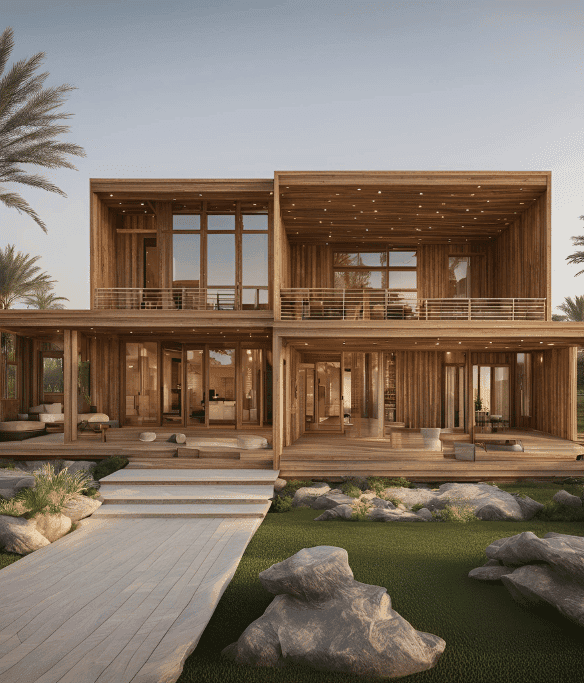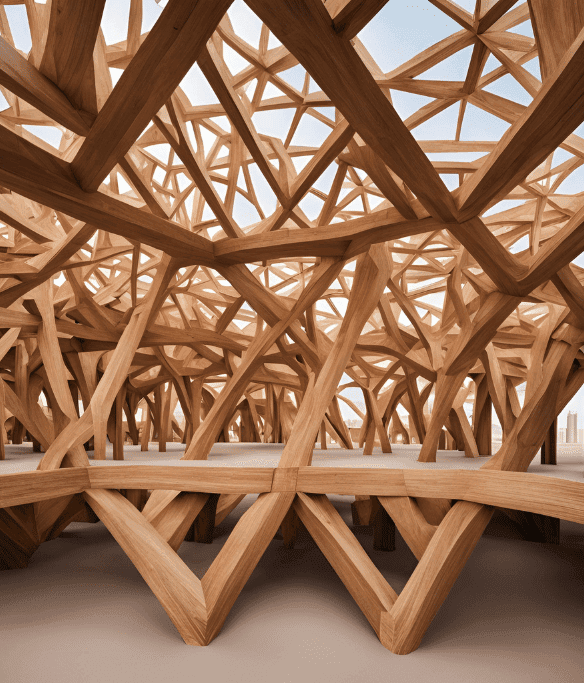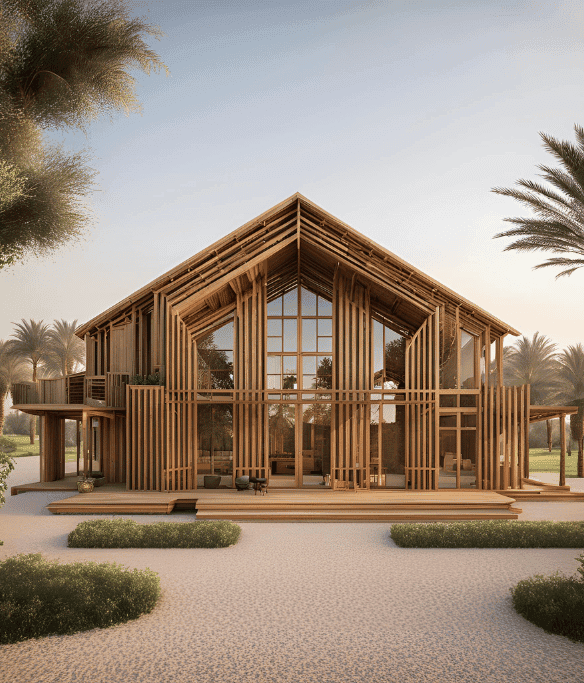In this blog post, we'll share expert tips and strategies for designing a low-maintenance landscape that not only enhances the beauty of your outdoor space but also reduces the time and effort required for upkeep.
In this blog post, we'll share expert tips and strategies for designing a low-maintenance landscape that not only enhances the beauty of your outdoor space but also reduces the time and effort required for upkeep.
About Author


AL HATTAB is the leading manufacturer and trader of outdoor wooden structures, garden furniture, and complex interior solutions involving aluminum and glass projects in the UAE, specializing in both standard and custom-made prefabricated structures.
About Author

AL HATTAB is the leading manufacturer and trader of outdoor wooden structures, garden furniture, and complex interior solutions involving aluminum and glass projects in the UAE, specializing in both standard and custom-made prefabricated structures.
Introduction:
Designing a low-maintenance landscape doesn't mean sacrificing beauty or creativity. With the right planning and design strategies, you can create a stunning outdoor space that requires minimal upkeep and still looks great year-round. In this blog post, we'll share expert tips and insights to help you design a low-maintenance landscape that enhances your property's curb appeal and reduces the time and effort spent on maintenance tasks.
Tip 1: Choose Low-Maintenance Plants: Selecting the right plants is key to creating a low-maintenance landscape. Choose native or drought-tolerant plants that require minimal water, fertilizer, and pest control. Opt for perennial plants that come back year after year and require less replanting.
Tip 2: Incorporate Hardscape Features: Integrating hardscape elements such as pathways, patios, and retaining walls can reduce the amount of lawn and planting beds in your landscape, minimizing the need for mowing, watering, and weeding. Choose durable materials like stone, brick, or concrete that require little to no maintenance.
Tip 3: Use Mulch and Groundcovers: Mulch and groundcovers not only suppress weeds and retain moisture in the soil but also add visual interest to your landscape. Choose organic mulches like bark or wood chips that break down over time and enrich the soil. Groundcovers like creeping thyme or ornamental grasses can fill in spaces between plants and reduce the need for mulching and weeding.
Tip 4: Implement Smart Design Principles: Design your landscape with efficiency and functionality in mind. Group plants with similar water and sunlight requirements together to simplify watering and maintenance. Create defined planting beds and borders to make mowing and edging easier. Consider installing irrigation systems or rain barrels to automate watering and conserve water.
Tip 5: Plan for Easy Access and Maintenance: Design pathways, access points, and outdoor living areas to be easily accessible and navigable. Leave space around plants and hardscape features for maintenance activities like pruning, weeding, and mulching. Consider installing landscape lighting to enhance visibility and safety during nighttime maintenance tasks.
Conclusion:
Designing a low-maintenance landscape is all about thoughtful planning, strategic plant selection, and smart design choices. By following these expert tips and incorporating low-maintenance principles into your landscape design, you can create a beautiful outdoor space that enhances your property's aesthetic appeal and requires minimal upkeep. Whether you're a seasoned gardener or a novice landscaper, these tips will help you achieve a stunning and easy-to-care-for landscape that you can enjoy for years to come.
Introduction:
Designing a low-maintenance landscape doesn't mean sacrificing beauty or creativity. With the right planning and design strategies, you can create a stunning outdoor space that requires minimal upkeep and still looks great year-round. In this blog post, we'll share expert tips and insights to help you design a low-maintenance landscape that enhances your property's curb appeal and reduces the time and effort spent on maintenance tasks.
Tip 1: Choose Low-Maintenance Plants: Selecting the right plants is key to creating a low-maintenance landscape. Choose native or drought-tolerant plants that require minimal water, fertilizer, and pest control. Opt for perennial plants that come back year after year and require less replanting.
Tip 2: Incorporate Hardscape Features: Integrating hardscape elements such as pathways, patios, and retaining walls can reduce the amount of lawn and planting beds in your landscape, minimizing the need for mowing, watering, and weeding. Choose durable materials like stone, brick, or concrete that require little to no maintenance.
Tip 3: Use Mulch and Groundcovers: Mulch and groundcovers not only suppress weeds and retain moisture in the soil but also add visual interest to your landscape. Choose organic mulches like bark or wood chips that break down over time and enrich the soil. Groundcovers like creeping thyme or ornamental grasses can fill in spaces between plants and reduce the need for mulching and weeding.
Tip 4: Implement Smart Design Principles: Design your landscape with efficiency and functionality in mind. Group plants with similar water and sunlight requirements together to simplify watering and maintenance. Create defined planting beds and borders to make mowing and edging easier. Consider installing irrigation systems or rain barrels to automate watering and conserve water.
Tip 5: Plan for Easy Access and Maintenance: Design pathways, access points, and outdoor living areas to be easily accessible and navigable. Leave space around plants and hardscape features for maintenance activities like pruning, weeding, and mulching. Consider installing landscape lighting to enhance visibility and safety during nighttime maintenance tasks.
Conclusion:
Designing a low-maintenance landscape is all about thoughtful planning, strategic plant selection, and smart design choices. By following these expert tips and incorporating low-maintenance principles into your landscape design, you can create a beautiful outdoor space that enhances your property's aesthetic appeal and requires minimal upkeep. Whether you're a seasoned gardener or a novice landscaper, these tips will help you achieve a stunning and easy-to-care-for landscape that you can enjoy for years to come.
Introduction:
Designing a low-maintenance landscape doesn't mean sacrificing beauty or creativity. With the right planning and design strategies, you can create a stunning outdoor space that requires minimal upkeep and still looks great year-round. In this blog post, we'll share expert tips and insights to help you design a low-maintenance landscape that enhances your property's curb appeal and reduces the time and effort spent on maintenance tasks.
Tip 1: Choose Low-Maintenance Plants: Selecting the right plants is key to creating a low-maintenance landscape. Choose native or drought-tolerant plants that require minimal water, fertilizer, and pest control. Opt for perennial plants that come back year after year and require less replanting.
Tip 2: Incorporate Hardscape Features: Integrating hardscape elements such as pathways, patios, and retaining walls can reduce the amount of lawn and planting beds in your landscape, minimizing the need for mowing, watering, and weeding. Choose durable materials like stone, brick, or concrete that require little to no maintenance.
Tip 3: Use Mulch and Groundcovers: Mulch and groundcovers not only suppress weeds and retain moisture in the soil but also add visual interest to your landscape. Choose organic mulches like bark or wood chips that break down over time and enrich the soil. Groundcovers like creeping thyme or ornamental grasses can fill in spaces between plants and reduce the need for mulching and weeding.
Tip 4: Implement Smart Design Principles: Design your landscape with efficiency and functionality in mind. Group plants with similar water and sunlight requirements together to simplify watering and maintenance. Create defined planting beds and borders to make mowing and edging easier. Consider installing irrigation systems or rain barrels to automate watering and conserve water.
Tip 5: Plan for Easy Access and Maintenance: Design pathways, access points, and outdoor living areas to be easily accessible and navigable. Leave space around plants and hardscape features for maintenance activities like pruning, weeding, and mulching. Consider installing landscape lighting to enhance visibility and safety during nighttime maintenance tasks.
Conclusion:
Designing a low-maintenance landscape is all about thoughtful planning, strategic plant selection, and smart design choices. By following these expert tips and incorporating low-maintenance principles into your landscape design, you can create a beautiful outdoor space that enhances your property's aesthetic appeal and requires minimal upkeep. Whether you're a seasoned gardener or a novice landscaper, these tips will help you achieve a stunning and easy-to-care-for landscape that you can enjoy for years to come.
Other Blogs
Other Similar Blogs
Your go-to destination for insightful articles, tips, and inspiration on all things landscaping and outdoor living
Other Blogs
Other Similar Blogs
Your go-to destination for insightful articles, tips, and inspiration on all things landscaping and outdoor living
Other Blogs
Other Similar Blogs
Your go-to destination for insightful articles, tips, and inspiration on all things landscaping and outdoor living


